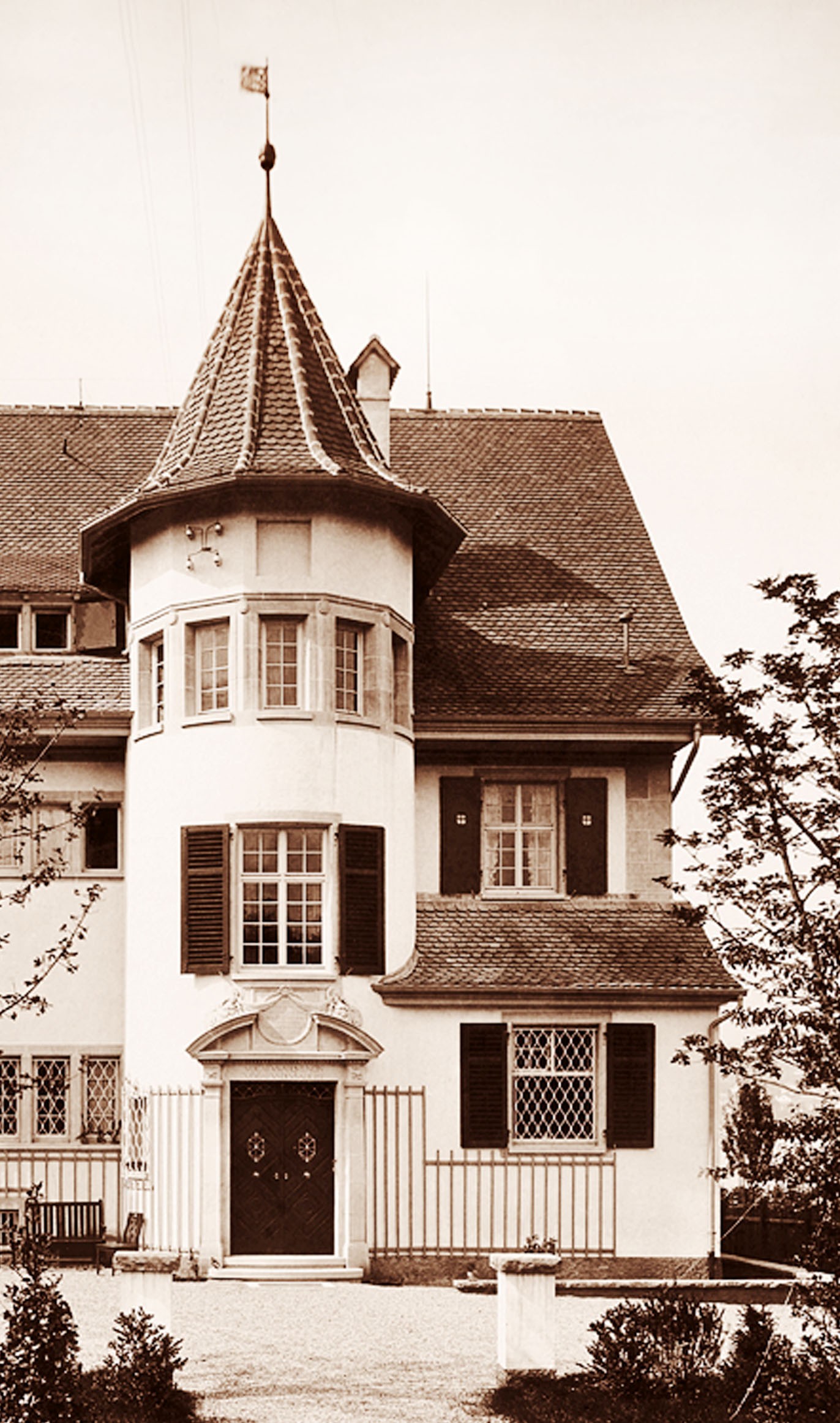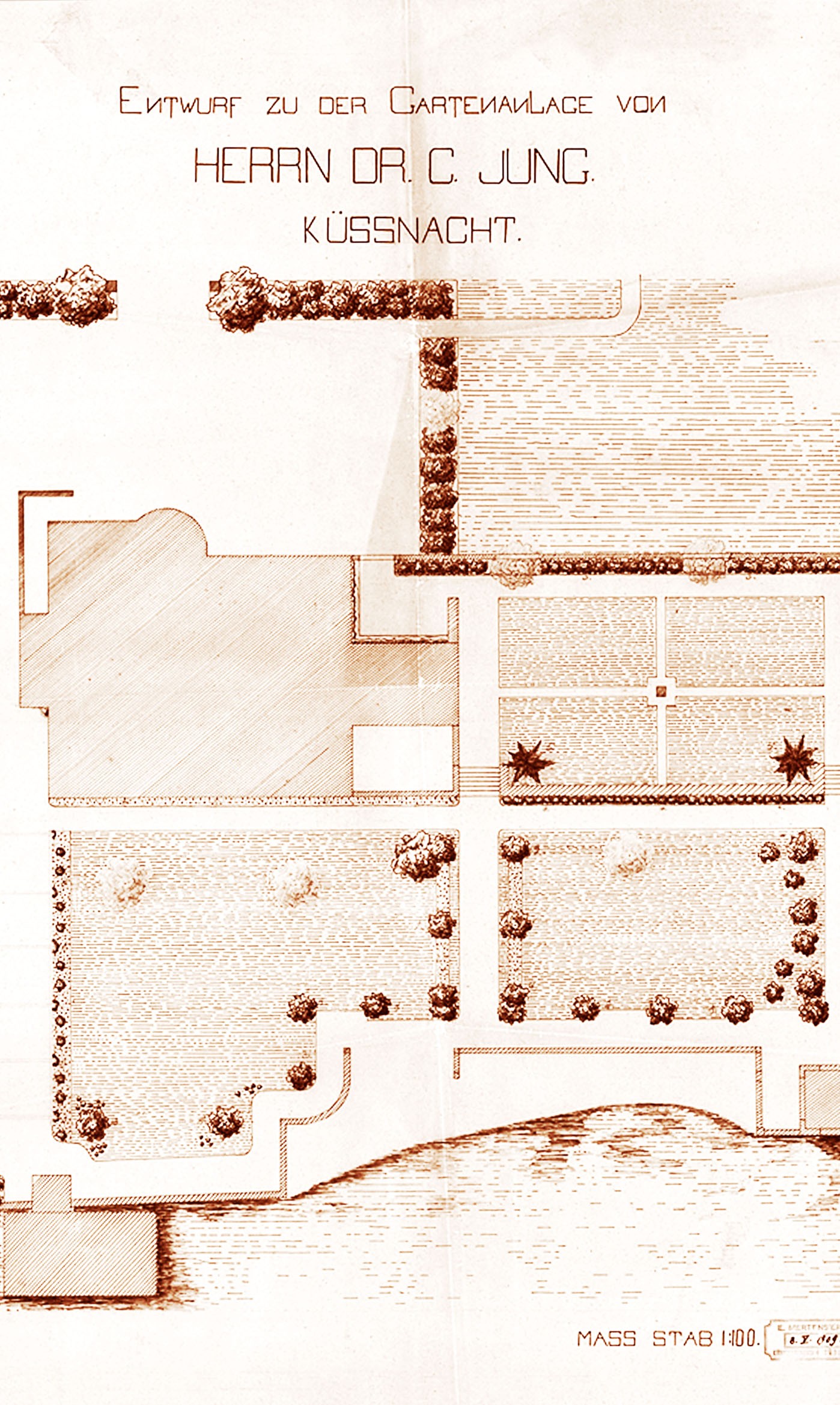
"VOCATUS ATQUE NON VOCATUS DEUS ADERIT
Gerufen und nicht gerufen wird Gott da sein."
Inschrift über dem Hausportal
"In 1908 Carl Gustav Jung and his wife Emma Rauschenbach built this house in this placid and serene location." The inscription in Latin adorns the portal of the impressive tower at the front of the C.G. Jung House in Küsnacht. Still today the words chiselled in stone welcome guests to the residence.
When, in 1907, C.G. and Emma Jung-Rauschenbach decided to build a new home, the young family was still living in Zurich where Jung worked as a senior doctor in the “Burghölzli lunatic asylum”. Emma’s wealthy father had recently died and a substantial inheritance provided leeway to start thinking about building a new stately residence for the growing family. The young couple found a suitable plot of land on the shores of the Lake of Zurich in Küsnacht – close to the water as Jung had always wanted. The house was built with the help of a cousin, the architect Ernst Fiechter, with Jung playing an active and significant role in the residence’s design and layout. Many motifs from Jung’s earlier thoughts and imaginations, which would heavily occupy him in the later years of his career, flowed into the design, thus, for instance, the precedence of the library over other rooms and the sturdy tower at the front of the house. The family moved to their new home on Seestrasse in 1909. At the same time Jung gave up his work at the clinic and began taking in patients in his private practice at home, in those days a complete novelty. The new setup allowed Jung to merge his work and research with family life, an arrangement he stuck to for the rest of his career.
Emma Jung-Rauschenbach died in 1955, with Jung staying in the house in Küsnacht until his death in 1961 – altogether more than half a century. The residence remained in the family’s possession and was passed down from children to grandchildren. In 2002 the "Foundation C.G. Jung Küsnacht" was established and took over the house with the aim of preserving C.G. and Emma Jung-Rauschenbach’s residence for posterity. The Museum C.G. Jung House is a major part of this endeavour.
"At that time the idea became fixed in my mind that I must live near a lake; without water, I thought, nobody could live at all."
Memories, Dreams, Reflections by C.G. Jung
C.G. Jung assumed responsibility not only for the architecture and construction of the new home in Küsnacht, but he was also heavily involved in the design and layout of the surrounding gardens. Together with the renowned horticultural company E. Mertens’ Erbe he created an extraordinary landscape, blending garden and buildings into a unique entity. C. G. Jung’s garden realm remains almost untouched to this day.
Arriving from Seestrasse visitors are offered an impressive view of the residence. A driveway featuring two cobbled ruts and flanked by conical and perspectively arranged box trees leads to the former home of the Jung-Rauschenbach family. The upper part of the garden with its fruit trees and crop plants is different from the lakeside flower garden. The glazed veranda at the side of the house looks on to an oblong, traditional English-style sunken garden with a large stone handle vase planted with flowers at the centre. On sunny days Jung used to enjoy his afternoon tea here under the shady pines. A dainty garden pavilion bounds the property towards the lake on the left. Jung called this place his “little cabinet by the lake”. Beyond a strip of reeds, a magnificent panorama view of the lakeshore unfolds. A stone jetty protrudes into the lake and leads to a little mooring place in front of the boathouse. Here Jung kept the Pelikan, his beloved sailing yacht, and his sailing dinghy. From this side of the shore, a paved path leads to a little stone plaza surrounded by trees and cherry laurel. In this little idyllic hideout – referred to as the “garden room” – Jung sometimes received his patients during the warm summer months.
